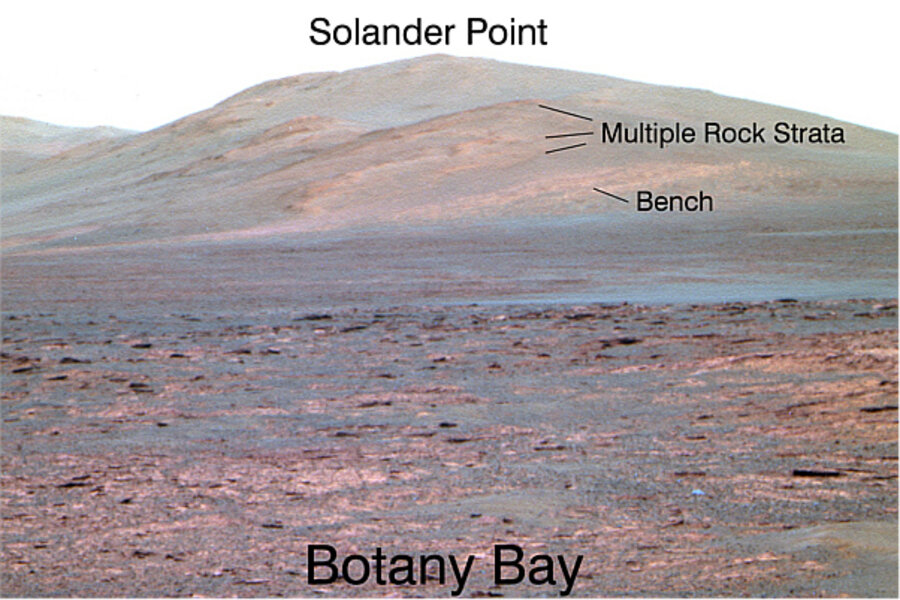Old NASA rover shows off new tricks
Loading...
Mars Opportunity Rover, the little rover that could, has spent nearly 10 years on Mars, but its latest finding could be the biggest yet. A couple weeks ago, Opportunity found evidence that a small rock called "Esperance" was made of clay minerals.
That may not sound like much – clay is common here on Earth, after all – but the scientists got excited. Why? You can't make clay without water. Lots of water.
"A lot of water moved through this rock," confirmed Steve Squyres, the principal investigator for the rover mission.
And not just the highly acidic water common near volcanoes, which is toxic to most life forms, he added: "This is water you could drink."
It's not yet a smoking gun for life, but it's a sign that neutral water once flowed on Mars, and thus could well have fallen in a gentle, life-supportive rain.
“The Esperance results are some of the most important findings of our entire mission," said Dr. Squyres, a professor at Cornell University.
"Esperance" comes from the Latin word for "hope," which seems appropriate, since this is one of the strongest signs yet that Mars was once friendly toward Earth-like life. The area where Esperance was found, called "Cape York," has been a gold mine for scientists over the past 20 months, even though only a few meters of rock layers are exposed.
Opportunity's next destination, "Solander Point," has about ten times as much exposed rock layering as Cape York. The scientists hope the different layers will reveal how Mars's environment has changed over time.
Next stop: A 'road cut' on Mars
Geologists love highway road cuts, where dynamite has revealed the inner face of a hill or mountain, so it's no surprise that the planetary geologists who are steering Opportunity are driving toward a thick stack of rock layers. Solander, like Cape York, is part of the rim of Endeavor Crater, which is about 14 miles across.
"Getting to Solander Point will be like walking up to a road cut where you see a cross section of the rock layers," said Ray Arvidson of Washington University, St. Louis, in a press release.
These rock layers will allow the research team to look back in time. As they go down through the layers, they're looking deeper and deeper into the history of Mars. In fact, Endeavor Crater has rock layers older than anything Opportunity saw in its first eight years on Mars, when it explored Eagle, Endurance, Victoria, and Santa Maria craters.
Solander Point is still a few weeks away at Opportunity's travel speed of about a quarter-mile per week. The science team hopes Opportunity will get there before southern-hemisphere winter sets in, since the rover needs abundant sunlight to function. Solander's slopes tilt toward the equator, which will help maximize the amount of sun hitting Opportunity's solar panels.
"We're heading to a 15-degree north-facing slope, with a goal of getting there well before winter," says John Callas, the team's project manager. The depths of the Martian winter will come in February 2014, but the days are already getting shorter. Mars's autumn begins July 31.
10 candles on their Martian birthday cakes?
10 years ago today, NASA launched Opportunity's robot twin, Spirit. Opportunity took the second rocket, leaving Earth on July 7, 2003. Both landed in January 2004 to begin their research missions, which needed to last 90 days to count as a success. As it turned out, we needed to redefine "success" – Spirit lasted more than five years, and Opportunity is still chugging along, racking up more and more science triumphs.
The rover is slowing down, the team says, and they're covering their bets. According to NASA's latest update, Opportunity is taking a quick detour from its trip to Solander Point to check out Nobby Head, another north-facing hill where it might have to spend the winter, if the 1.2 mile trek to Solander Point turns out to be too ambitious for the aging rover.








